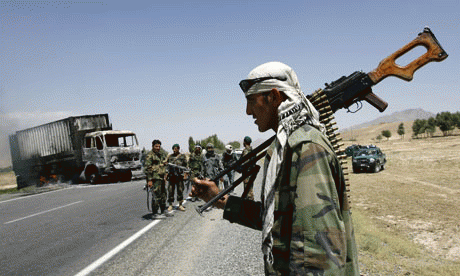The Taliban has also been able to pay its fighters roughly $10 per day,
more than twice the wage for most legitimate work in the country, and
provides assistance for families of those fighters killed or wounded
which may be better than the horrific hospital conditions faced by wounded ANA and ANP soldiers.
The wage is attractive. Unemployment in Afghanistan since the NATO
occupation began has consistently hovered at around 40 percent, and
higher in more remote areas, despite some indigenous programs which seem
to do a good job of creating employment when adequately funded. In January of 2014 the New York Times reported that hunger and starvation among Afghan children was, according to doctors in the field, worse than it has ever been since 2001.
The prisoner exchange by which Sgt. Bergdahl's freedom was obtained, in
which five alleged Taliban members were released from Guantanamo, has
been criticized by congressmen for being contrary to American interests
and for posing a threat to the United States.
US taxpayer expenditures on the military presence in Afghanistan have
run at approximately $10 billion per month, according to former US
General Barry McCaffrey, who called it the "burn rate." Of this about a third is for fuel deliveries required to keep a modern army with air power running. Critics of the war and the Pentagon charge that the profit motive is at work within the political forces which perpetuate it.
(Note: You can view every article as one long page if you sign up as an Advocate Member, or higher).






